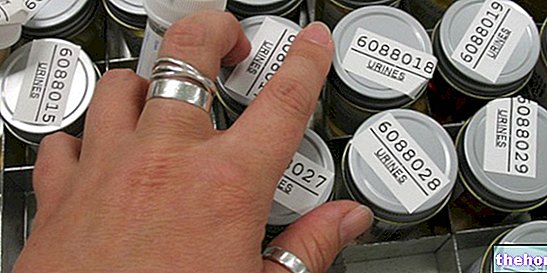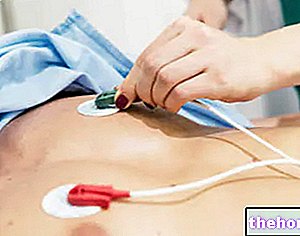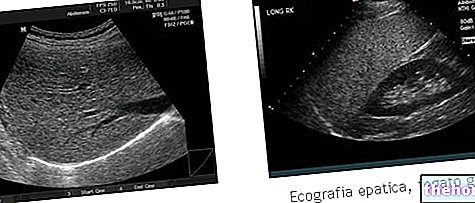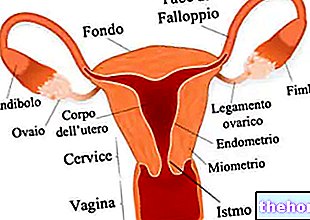Key points
The spinal tap (lumbar puncture) is a medical-surgical practice that consists in the collection of a sample of cerebrospinal fluid by inserting a needle between the L3-L4 or L4-L5 vertebrae.
Goals of rachycentesis
- Diagnostic purposes of rachycentesis: ascertainment of brain infections (eg meningitis), demyelinating diseases (eg multiple sclerosis), neoplasms, epilepsy.
- Therapeutic purposes of rachycentesis: reduction of intracranial pressure and administration of drugs (e.g. chemotherapy / spinal anesthesia)
Contraindications of rachicentesis
Lumbar puncture must NOT be performed in case of: sepsis, cerebral hernia, IDIOPATHIC intracranial hypertension, haemorrhagic diathesis, vertebral deformities, hypertension with bradycardia
Performing the rachicentesis
- Preparation of the sterile field (skin disinfection with iodine-based antiseptic substances)
- Performing local anesthesia
- Introduction of the lumbar puncture needle between the L3-L4 or L4-L5 intravertebral spaces
- Collecting a CSF Sample
- Removal of the spinal needle
- Cleaning the area
Post-rachycentesis complications
- Mild: headache (+ nausea / vomiting / dizziness), lower back pain, temporary paraesthesia
- Severe: anesthetic toxicity, bleeding, bleeding into the epidural space, epidural abscess, descent of the cerebellar tonsils, severe thrombocytopenia
Definition of rachicentesis
Spine - or lumbar puncture - is a surgical strategy performed to extract a sample of cerebrospinal fluid (CSF or cerebrospinal fluid, the fluid that surrounds and protects the brain and spinal cord).
The rachycentesis consists in the introduction of a needle between the third / fourth or fourth / fifth lumbar vertebrae: once the subarachnoid space is reached (between the arachnoid and the pia mater), a sample of liquid is collected.
In this informative article we will shed some light on some common questions regarding spinal taps:
- What is lumbar puncture used for?
- What are the contraindications?
- What is the surgical procedure? Is it painful?
- What complications / inconveniences do patients undergo spinal taps run?
- How are the results of rachycentesis interpreted?
Purpose
Lumbar puncture is performed for diagnostic or therapeutic purposes:
- DIAGNOSTIC SPINE: the goal is to collect a CSF sample to verify a possible infectious-inflammatory process affecting the brain (eg. Encephalitis, meningitis, Guillain Barre syndrome, etc.). Diagnostic spinal cordesis is also performed to ascertain whether or not the presence of demyelinating pathologies (eg multiple sclerosis) and for the search for neoplastic cells (oncological screening). Lumbar puncture is also performed to ascertain or deny a possible epileptic status (especially after a "suspicious" convulsion).
- THERAPEUTIC SPINE: indicated to reduce intracranial pressure in case of hydrocephalus (accumulation of CSF in the cavities - or ventricles - of the brain) or to administer medicines directly inside the sub-arachnoid space (eg spinal anesthesia, chemotherapy).
Contraindications
Spine may not be performed in some particular circumstances, listed below:
- Lumbar skin infection: spinal cord may promote the spread of the infection
- Sepsis
- Suspected or known cerebral hernia
- Degenerative joint disease
- Idiopathic intracranial hypertension: rachycentesis is strongly discouraged when it is not possible to trace the triggering cause of the aforementioned hypertension. We briefly recall that complicated intracranial hypertension can be associated with cerebral hernia.
- Respiratory disorders: hyperventilation, apnea, respiratory arrest
- Hemorrhagic diathesis: Coagulopathy or Thrombocytopenia
- Hypertension associated with bradycardia and impaired consciousness
- Vertebral deformities (e.g. scoliosis, kyphosis)
The rachicentesis must not be performed if the patient does not cooperate: in such situations, the subject must be slightly sedated.
Execution
The rachicentesis is performed on an outpatient basis: it takes a few minutes and is performed under local anesthesia.
BEFORE SPINICENTESIS
Before proceeding with the lumbar puncture, the medical team must prepare all the necessary equipment for the intervention: lumbar puncture needle, 5-10 ml syringes, local anesthetic, antiseptic, sterile gloves / gauze / drapes, intramuscular needles for local anesthetic etc ..
Before the rachicentesis, the doctor investigates the patient's medical history (anamnesis); blood tests are recommended to check for any bleeding or other circulation disorders. The doctor sometimes prescribes a CT scan to the patient to ascertain the absence of swelling or brain abnormalities. The patient is required to inform the doctor in case of anticoagulant therapy (eg warfarin, clopidogrel, aspirin, etc.). Any allergy to local anesthetic drugs must also be reported to the doctor.
The patient will then have to sign a form in which he declares to have been informed about the purposes, methods and possible risks of the intervention, giving his consent to the execution of the spinal cord.
DURING RACHICENTESIS
Lumbar puncture can be performed in lateral decubitus (positioning the patient in a fetal position, with arms and legs gathered), or in a sitting position, with the back bent forward and the elbows resting on a pillow. The patient must be relaxed and must NOT move during the procedure: sudden movements can cause the needle to break!
Even the doctor must assume a comfortable and safe posture: in this way he can perform the necessary maneuvers in total safety. Once the patient has been positioned correctly, spinal cord may be started. The surgical procedure is described in steps below:
- Preparation of the sterile field: the skin - near the point where the lumbar puncture is performed - should be disinfected with an antiseptic solution (generally based on iodine).
- Execution of local anesthesia (1% lidocaine) using a very thin needle: it is necessary to wait a few moments before practicing the spinal cord, to allow the anesthetic to exert its therapeutic effect.
- Introduction of the lumbar puncture needle between the L3-L4 or L4-L5 intravertebral spaces, until the sub-arachnoid space is reached. at the upper margin of the second lumbar vertebra) The insertion of the needle can promote a particular tingling sensation: it is necessary to inform the patient of this possibility, to avoid agitation and worry that could complicate the procedure.
The reaching of the sub-arachnoid space is identified by two very important elements: the sudden cessation of resistance to the needle and the emission of the CSF
- (Possible) measurement of intracranial pressure using Claude's manometer
- Collection of a CSF sample: the cerebrospinal fluid should NOT be aspirated, rather it must be collected by collecting the drops coming out of the needle. By doing this, you avoid subjecting the sub-arachnoid space to negative pressure; otherwise , the patient complains of nausea and headache. Usually, three sample tubes are collected, useful for the biochemical study, for microbiological analysis and for cell research.
- Removal of the spinal needle.
- Apply light pressure with sterile gauze directly to the puncture site.
- Cleaning of the area with a physiological solution and application of an antiseptic substance, essential to remove blood residues and avoid contamination of the area.
- Application of a medicated plaster at the point of insertion of the needle.
Watch the video
- Watch the video on youtube
After the rachicentesis
It is not uncommon for the patient to complain of a headache at the end of the rachicentesis: in this case, it is possible to administer an analgesic. After the blood collection, the patient must remain in the supine position for a few hours (usually 2 or 3 hours are sufficient) to monitor the clinical conditions. The patient is asked to take large quantities of water after lumbar puncture: forced liquid restores the level of the liquor.
Neither the forced hyperhydration nor the maintenance of the supine position have proved to be effective strategies for escaping the typical post-rachicentesis side effects (headache).
Rachicentesis: complications and results "




























